
Bay windows add character to a home and are usually the focal point of a room. But the wrong window treatment can turn their wow-factor into an eyesore. We'll show you how to easily measure these tricky windows for blinds or shades.
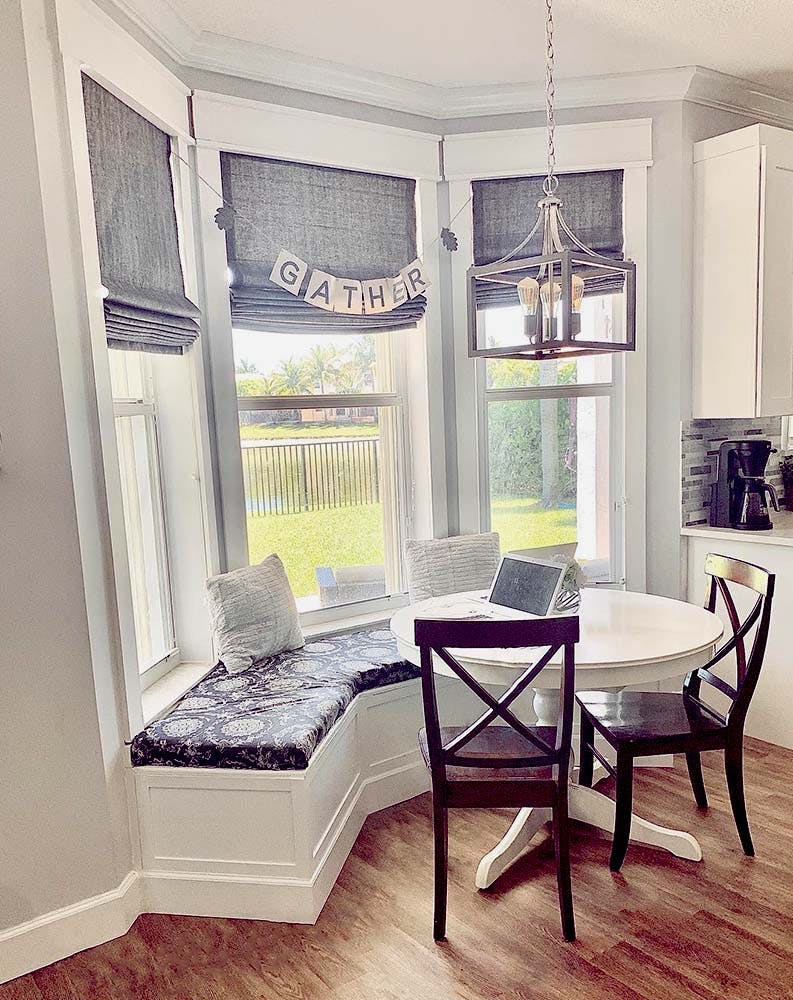
Pictured: Blinds.com Roman Shades in Jaspe Indigo. Photo via @mykindofcrazy_homeedition.
What Is A Bay Window?
Bay windows are a set of windows that angle toward each other in a curve. There are at least three window sections, but some may have more. Some bay windows have a built in alcove that can act like a window seat. Others give a room a more unique shape and create the illusion of a curved wall.
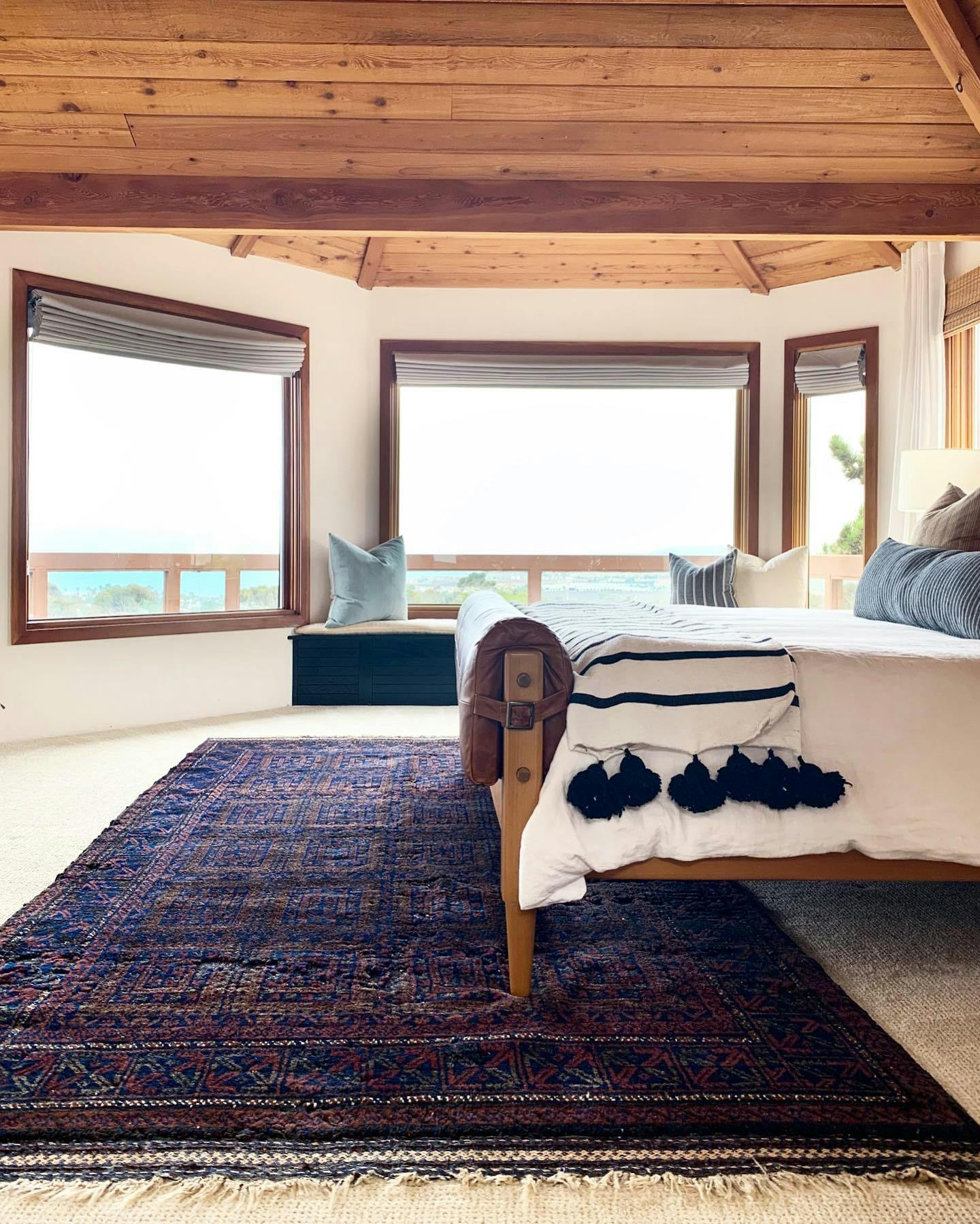
Pictured: Blinds.com Premier Roman Shade in Gent Greystone. Photo via @helick_hacienda.
Bay windows come in two common configurations: Traditional and Separated. Traditional bay windows have little to no separation between window sections. While separated bay windows have large sections of wall or trim between each window section.
For more details or types of bay windows, check out The Ultimate Guide To Bay Windows.
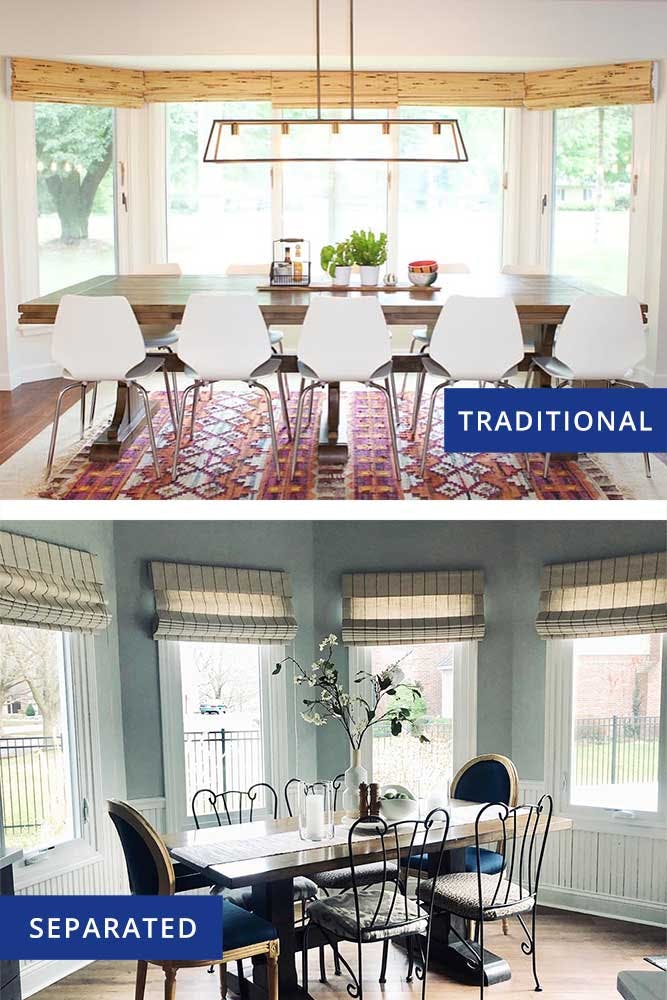
Pictured: (top) Blinds.com Cordless Woven Wood Shades in Ashbury Camel. Photo via @rmahtani. (bottom) Blinds.com Premium Roman Shades in Linen Stripe Vanilla-Stone. Photo via @hobsonangie.
Measuring Depth In A Bay Window
Window depth is one of the first measurements you'll want to check. Depth refers to how much space there is within a window opening (from front to back) where you can mount or install the blind. How deep your windows are will determine what kind of window treatment and mounting options you have.
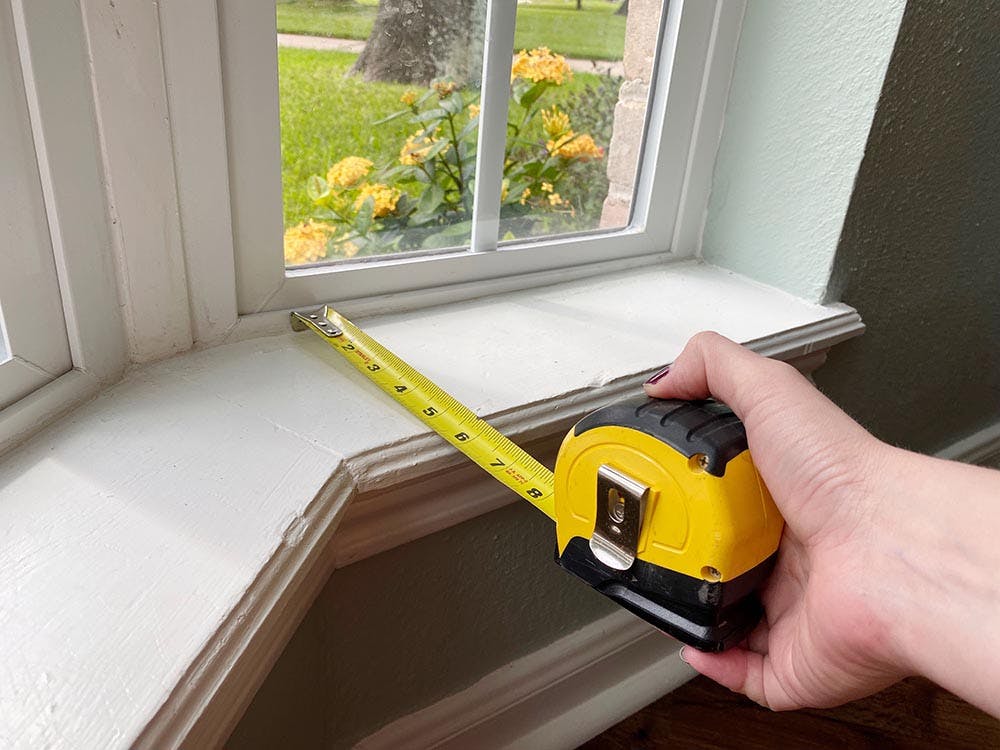
Proper depth is critical for bay windows because you want to make sure the blinds won't be colliding into each other at the corners of the window. When you measure, always use a steel tape to measure down to the nearest 1/8th inch. The space you measure for depth should be flat and not beveled.
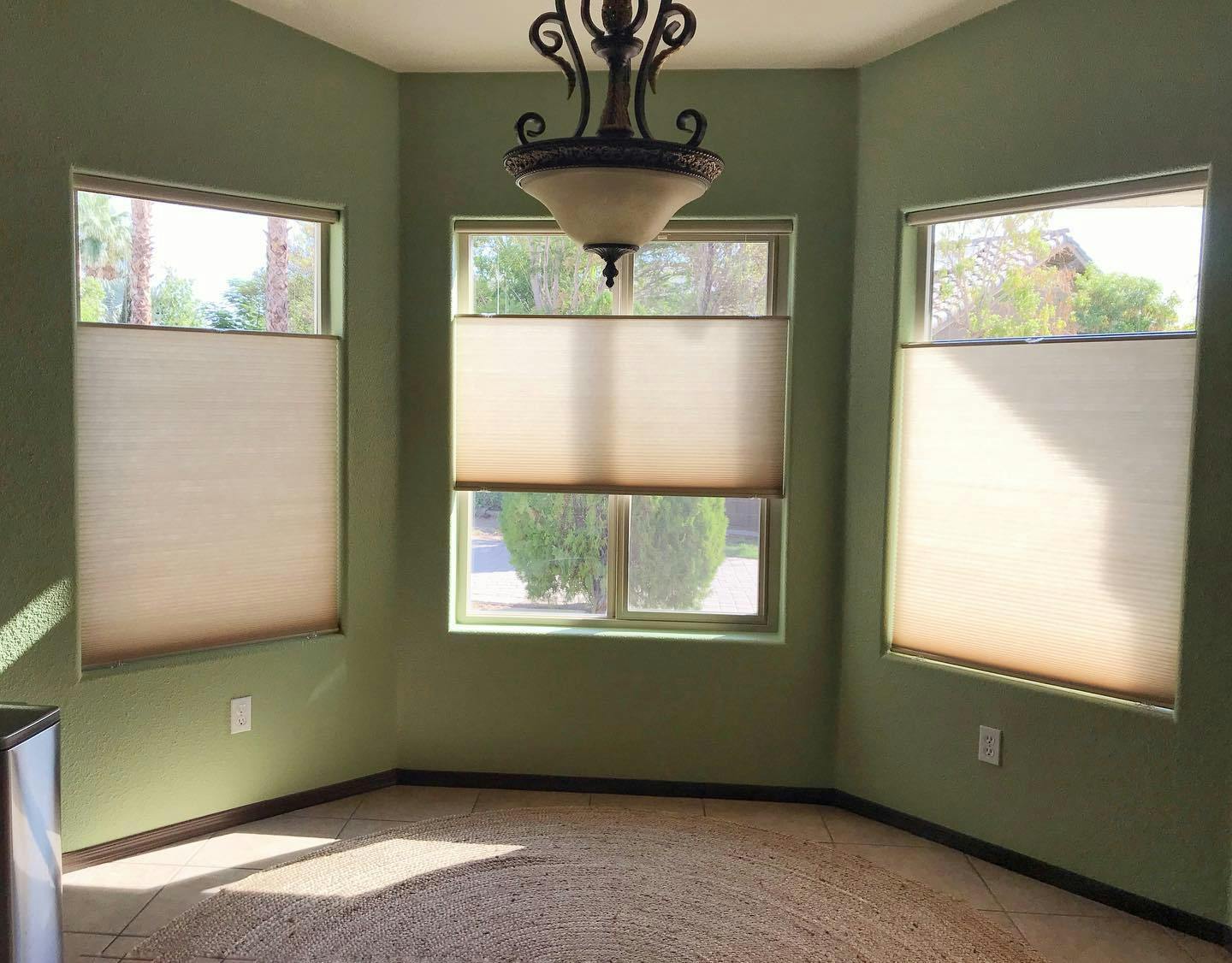
Pictured: Blinds.com Economy Light Filtering Cellular Shades in Pale Gold. Photo via @the_malika_has_spoken.
If there is beveled trim within your window, measuring depth may feel tricky. Look for the widest, flat section of your window's trim and measure depth there. This will wind up being where your bracket is installed.
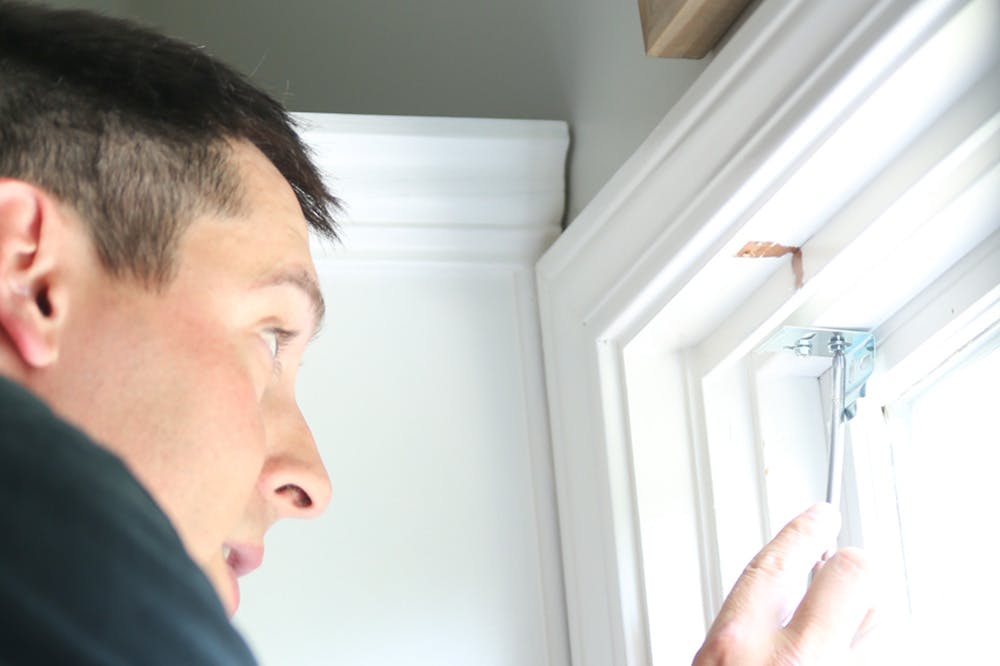
If your window does not have enough (or any) depth, don't worry. You still have options. Keep reading for instructions on measuring for Outside Mount blinds.
Mounting Types For Bay Windows
After checking your depth, it's time to choose a blind or shade and think about how you will install it. Check out our Ultimate Guide To Blinds For Bay Windows for suggestions on the best window treatments for bay windows.
Every window treatment on Blinds.com has a list of product specifications which tell you the mounting requirements for that particular blind or shade. It's important to check these mounting requirements against your window's depth to make sure they can be installed in your window before finalizing your order.

Inside Mount means your blind is installed within the window opening. The Minimum Inside Mount Depth is the smallest your window's depth can be and still have the blind installed as an inside mount.
Blinds ordered as inside mount have a small deduction taken off the width during manufacturing (usually not more than 1/2") so that the blinds do not scrape against the sides of the window when raising or lowering. Sometimes it is referred to as the "Approximate light gap" on each side.
For example: Say your window has the 1" minimum required depth to install your blind. Your blind's specificationss say it would need 3" depth in order to be fully recessed. You can still install this as an inside mount, but the blind will protrude from the window by 2 inches.
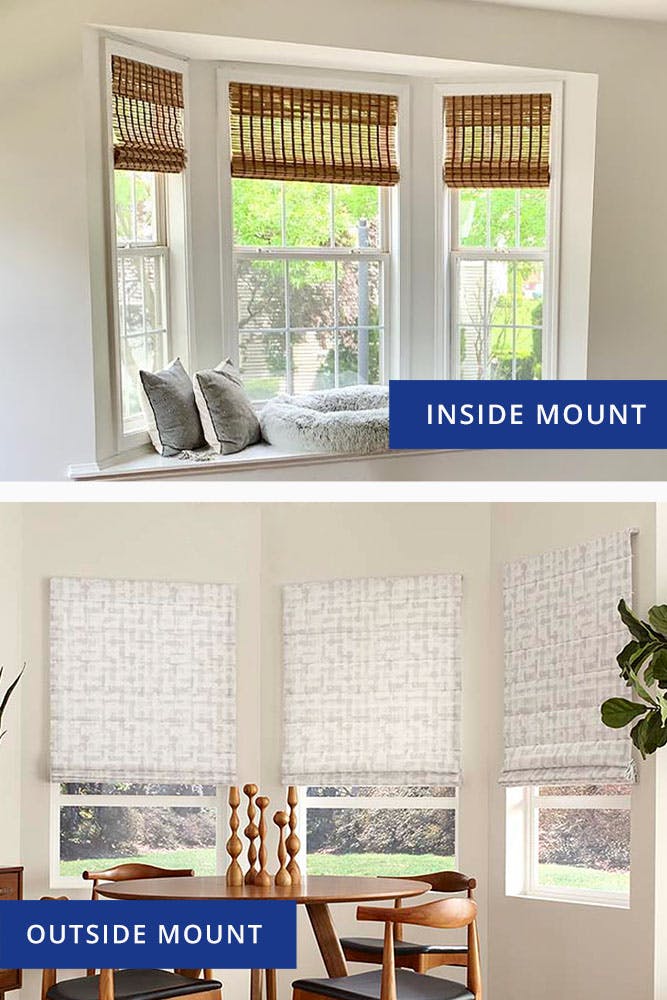
Pictured: (top) Blinds.com Cordless Woven Wood Shades in Ashbury Camel. Photo by @rmahtani. (Bottom) Blinds.com Roman Shade in Brushtrokes Mercury.
The Minimum Inside Mount Depth (fully recessed) is the amount of depth your blind needs in order to be flush with the window's opening. In other words, if you do not have the fully recessed depth, the blind can still be installed with the Minimum Inside Mount Depth but it will protrude from the window (referred to as partially recessed or partial inside mount).
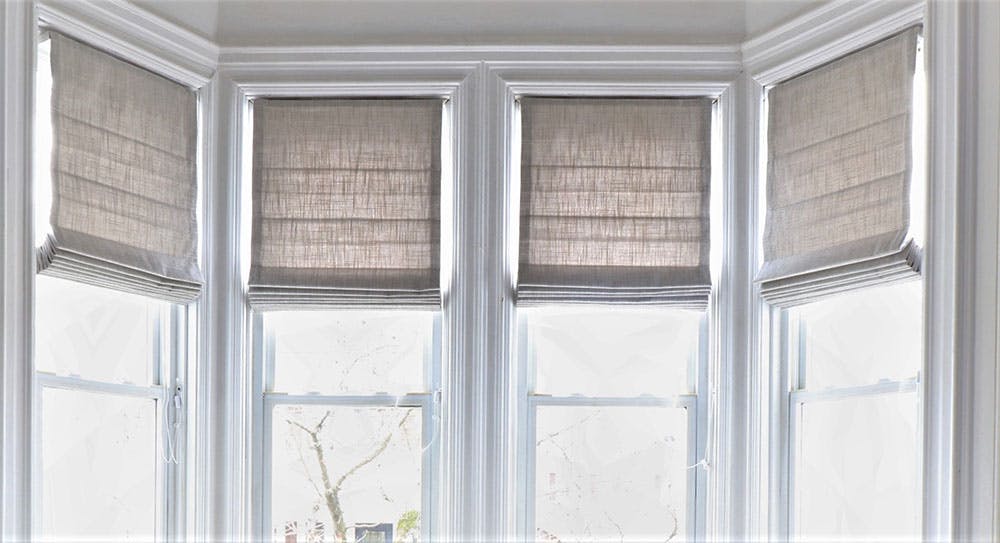
Pictured: Blinds.com Premier Roman Shades in Calcite Madrid. Photo via @madebycarli.
Outside Mount typically means the blind is installed outside the window opening, usually on the wall above the window. Minimum Outside Mounting Surface means this is how much flat space the blind's installation bracket needs in order to mounted outside the window frame. No deductions are taken off the width for outside mounts during manufacturing.
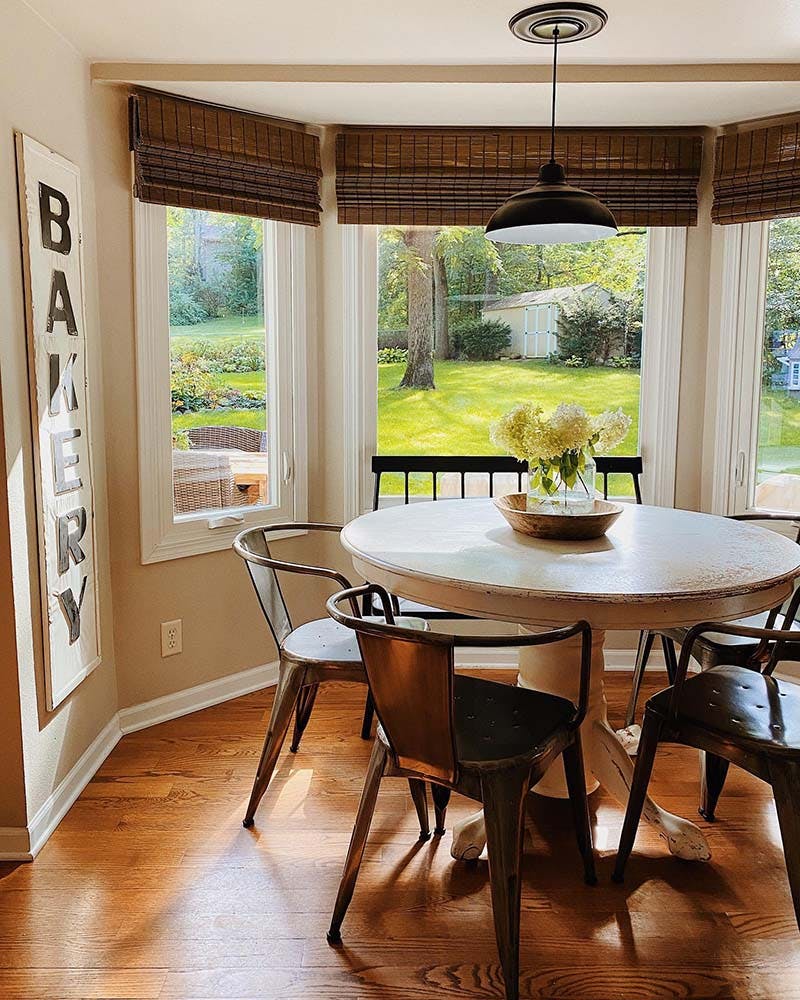
Pictured: Blinds.com Cordless Woven Wood Shade in Rustic Pecan. Photo via @kelcooper.
If your windows have thick sections of wall separating the individual window frames it's unlikely you blinds will bump into each other at the corners. This is the easiest type of bay window to measure because you can treat these like regular windows and follow standard window measuring instructions.
How To Measure Separated Bay Windows
If you have a bay window that has 3 (or more) separate windows with large sections of drywall between, here’s how you measure:
Use a steel tape measure to measure each window section's width in three places (at the top, middle and bottom). When you order, enter the narrowest width. Choosing the narrowest width ensures the blind won't scrape the edges of the window and damage the blind.
Also measure the height in three places. This time, enter the tallest height. This will ensure you get the most coverage if one side of your window is taller than the other.
Read More: Standard Inside Mount Measuring Guide
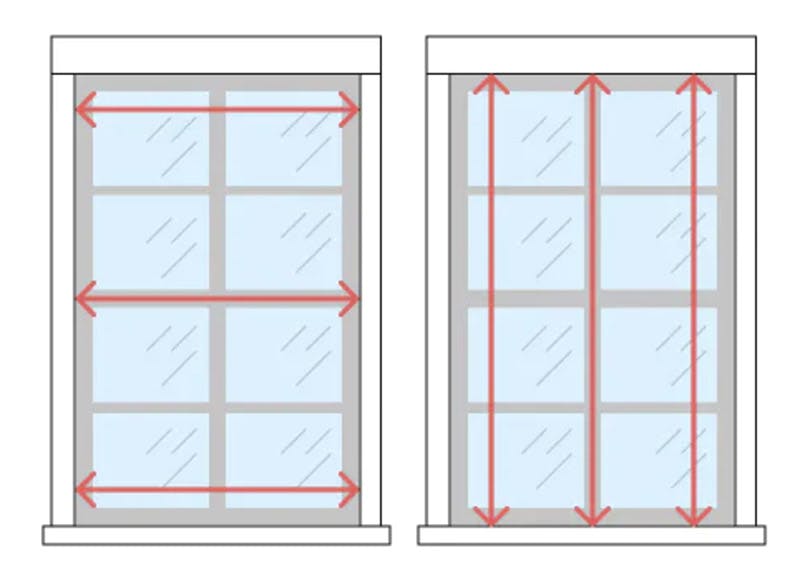
How To Measure For Traditional Bay Windows
When your windows have little to no wall or trim separating each section (like you see on casement windows), there's a bigger chance your blinds will collide against or scrape against each other in the corners. The key is figuring out exactly where the blinds will collide and then measuring between those points.
It sounds complicated, but we've made this really easy. All you need is a steel tape measure, a bit of cardboard and a pencil.
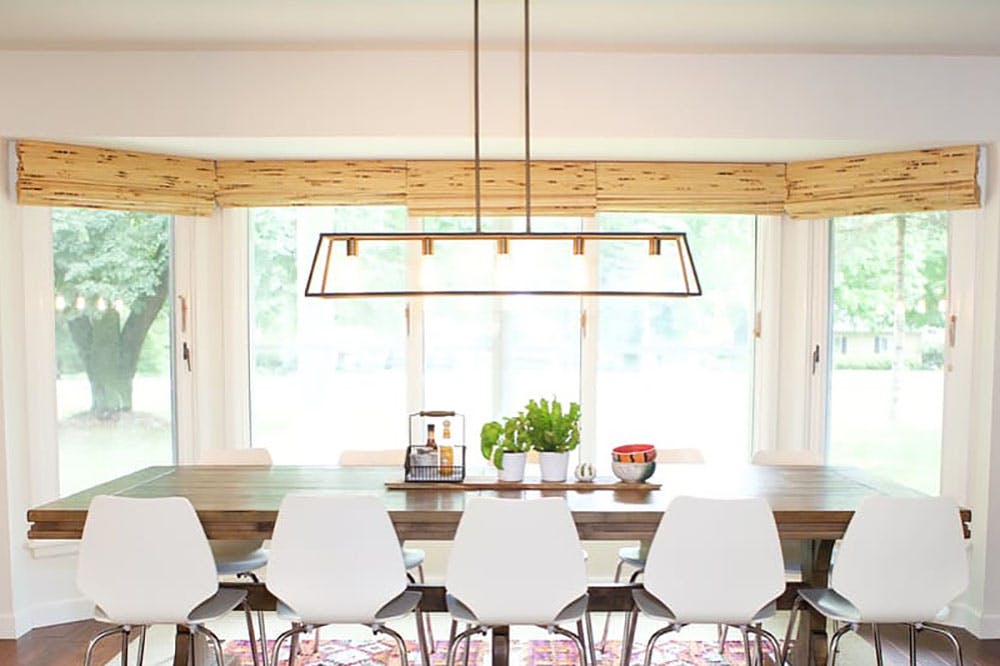
Pictured: Blinds.com Woven Wood Shades in Antigua Natural. Photo via @Jamiefinkinteriors.
Step 1. Make A Template
Cut two squares from the cardboard. These squares should be as wide as the depth of your chosen blind (aka the "Inside Mount fully recessed Depth" listed on your product's spec page). These squares will act like the headrails or our future blinds.
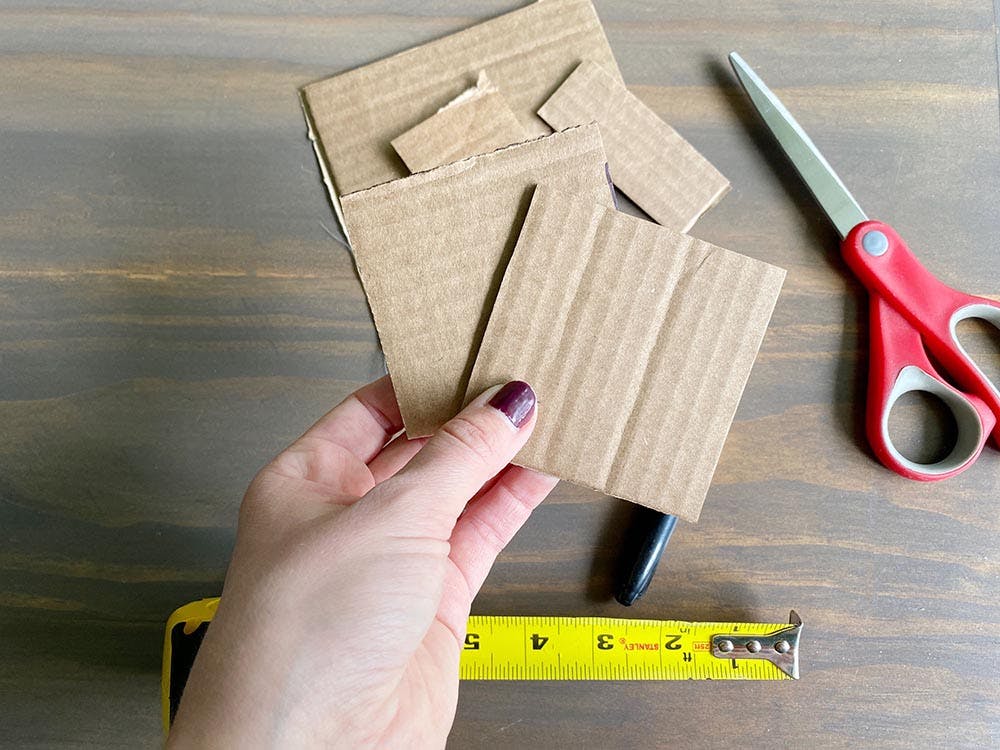
Step 2. Finding The Corner Collision Points
Place the squares in the window's corners so that the corners of the cardboard squares just barely touch.
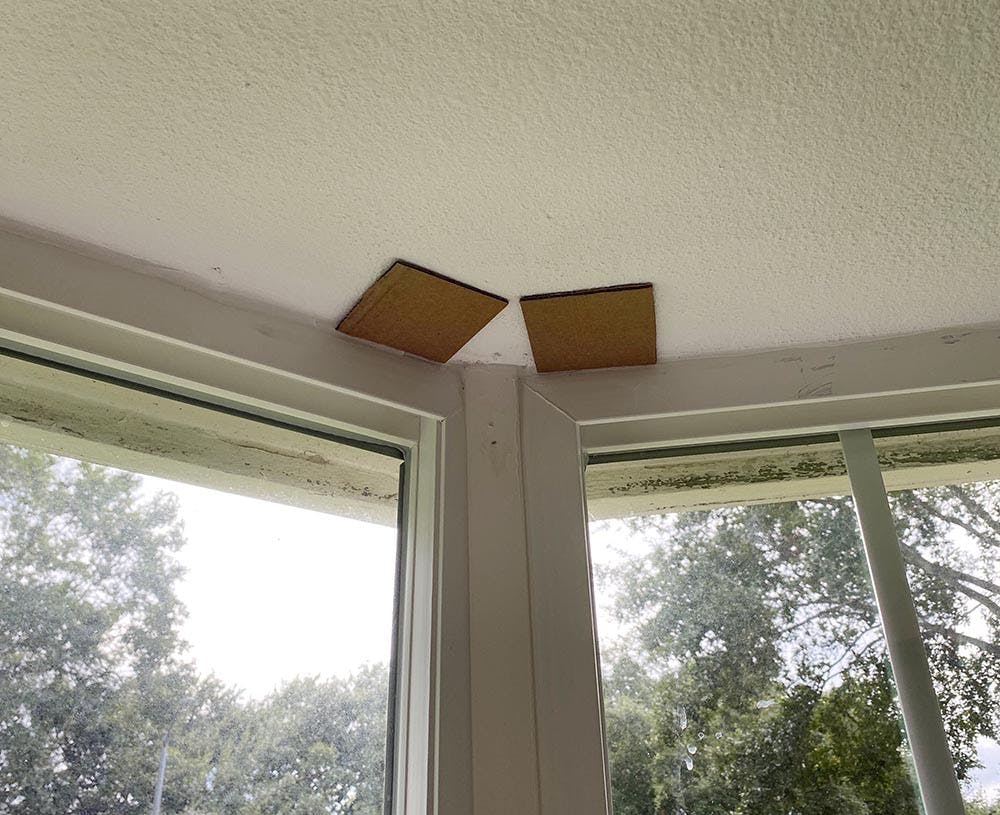
The squares may be within the window's frame or if you don't have enough depth, you can place them on the ceiling of the bay window's alcove. A bit of masking tape can help you hold the squares in place.
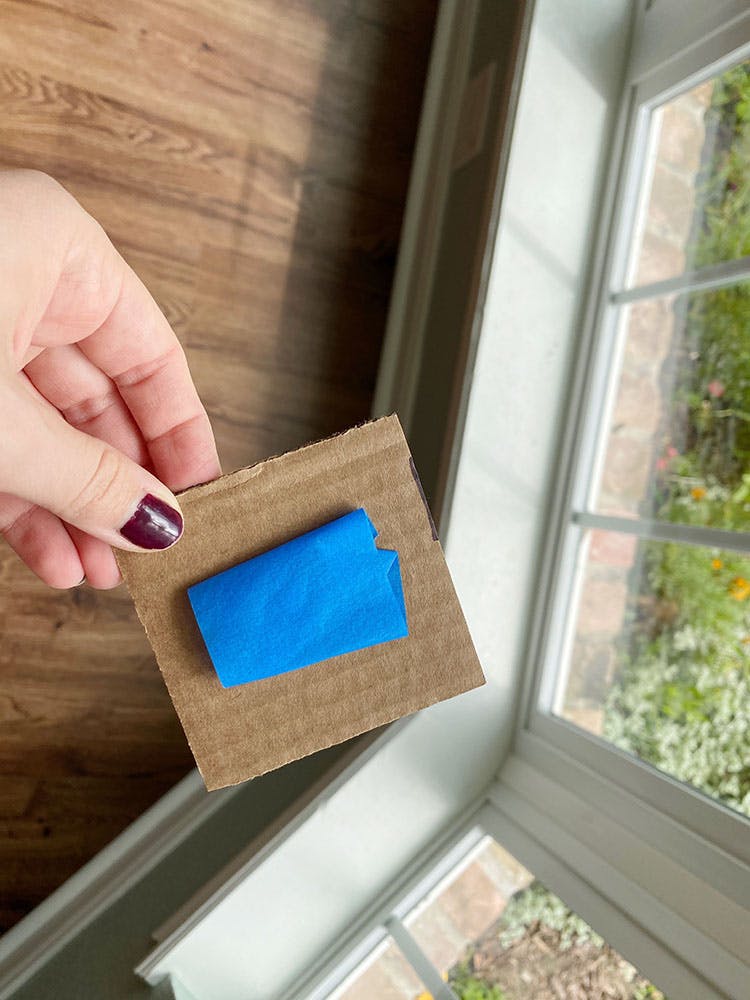
Step 3. Mark the Edges
On the wall (or ceiling) mark each square's inner edge with a pencil or bit of masking tape if you don't want to mark the window. Once your corners are all marked, measure each window section between those markings to get the window's width.
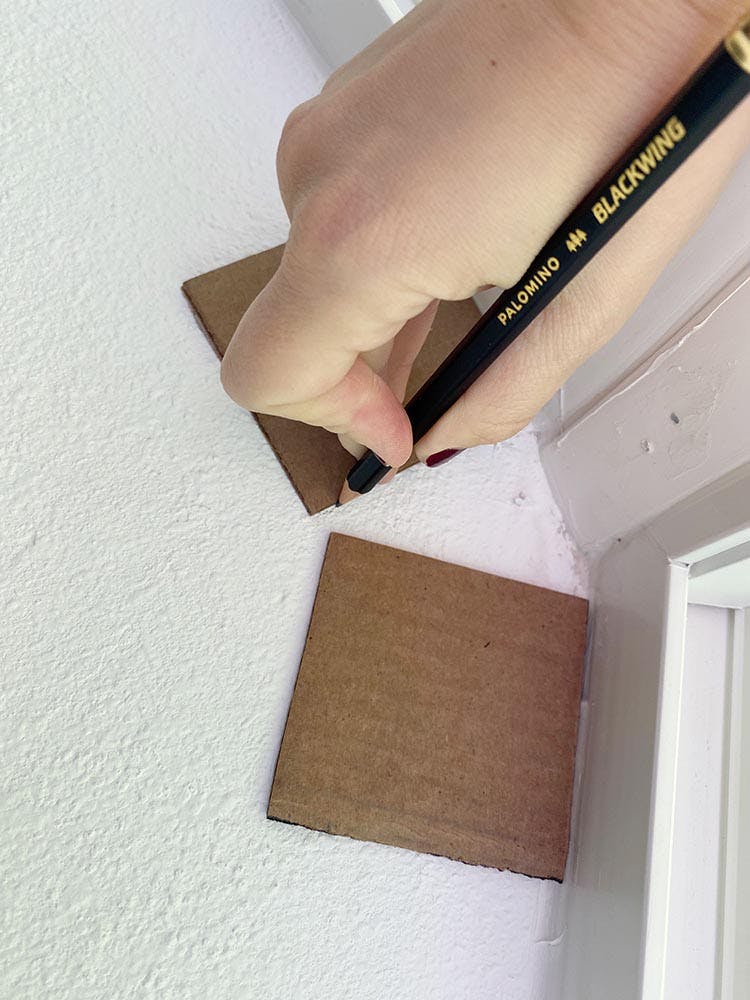
Step 4. Measure the Height
Measure the height from where you will be mounting the blind down to the bottom. Check the height in three places too and order the tallest height.
Don’t erase these collision points when you’re finished measuring. You’ll use them again when you install your blinds.
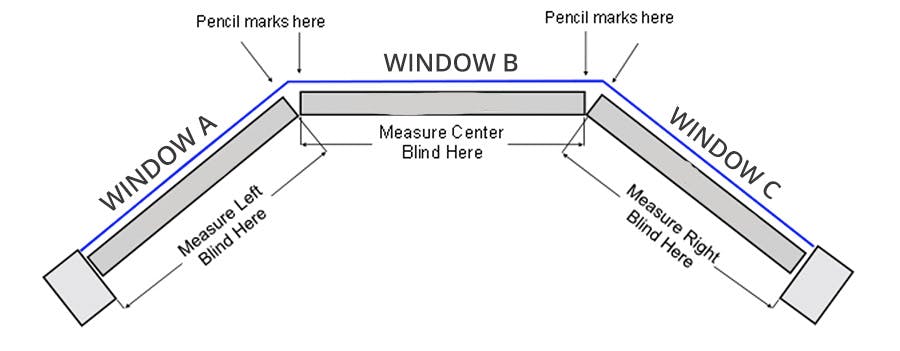
If the corners do collide, scoot the cardboard squares away from each other until the corners barely touch, mark the inner edge of each cardboard square with a pencil and use that as one of your measuring points.
Sometimes this can create light gaps between the blinds. If the gaps are too large for you, consider switching to an outside mount.
Measuring Bay Windows For Outside Mount Blinds or Shades
Most bay windows have limited depth, so outside mount installation is very popular. Before measuring for an outside mount blind or shade, use the cardboard square method to be absolutely sure your blinds won't collide in the corners.

Pictured: Blinds.com Roman Shades in Brushstrokes Mercury.
Next, measure your window opening's width and height in 3 places and select the largest of each. On outside mounts, it is recommended to add 3-4 inches to the overall width measurement so there is overlap for full coverage. It is also recommended to add at least 2 inches to the height to accommodate the headrail.
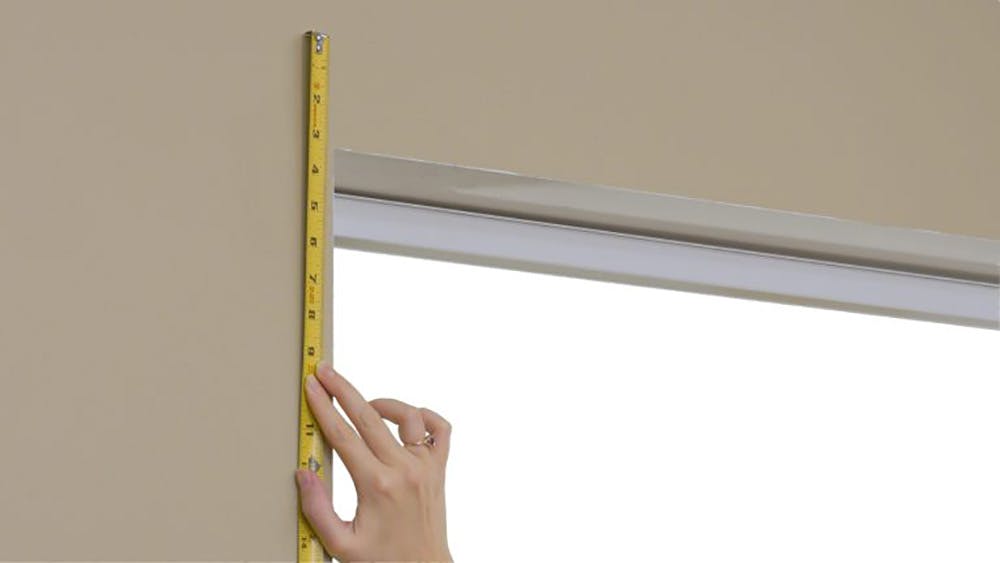
If your window has trim or moulding around it, decide if you want your blind to cover the trim too. If yes, measure the width of your trim from outer edge to outer edge. Do the same with the height, but add 2-3 inches. This will make sure you have the space to install the blind on the wall (instead of the face of the trim) without losing any coverage.
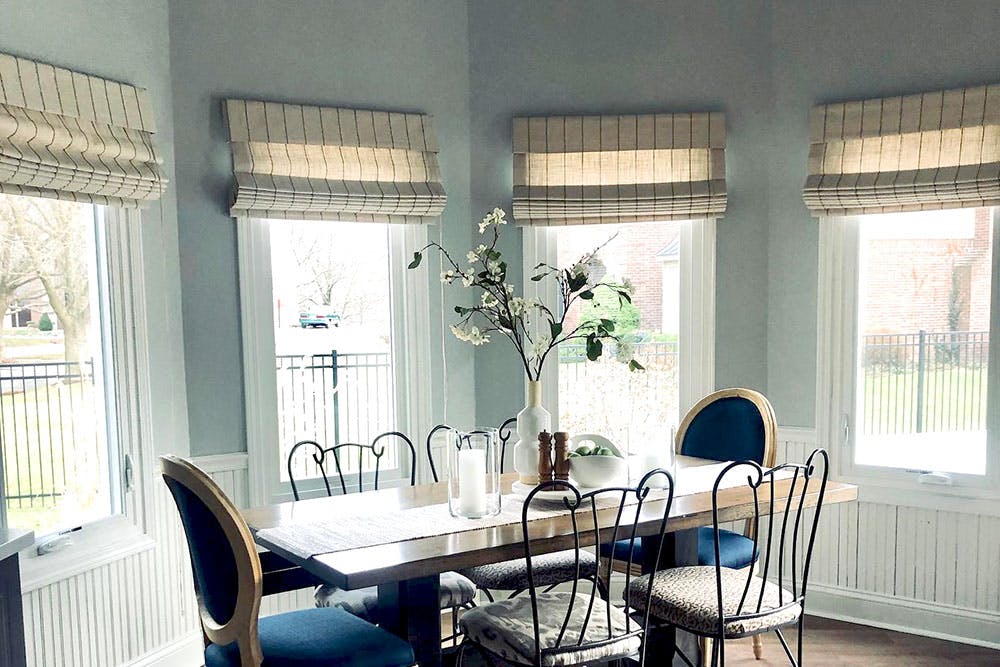
Pictured: Blinds.com Premium Roman Shades in Linen Stripe Vanilla-Stone. Photo via @hobsonangie.
Have More Than 3 Window Sections?
Bay windows come in a variety of arrangements and sizes. If your Bay Window has more than 3 window sections (also called a Bow Window), don't let that overwhelm you! The measuring process is the same. You'll just have a few more sections you'll need to measure for.
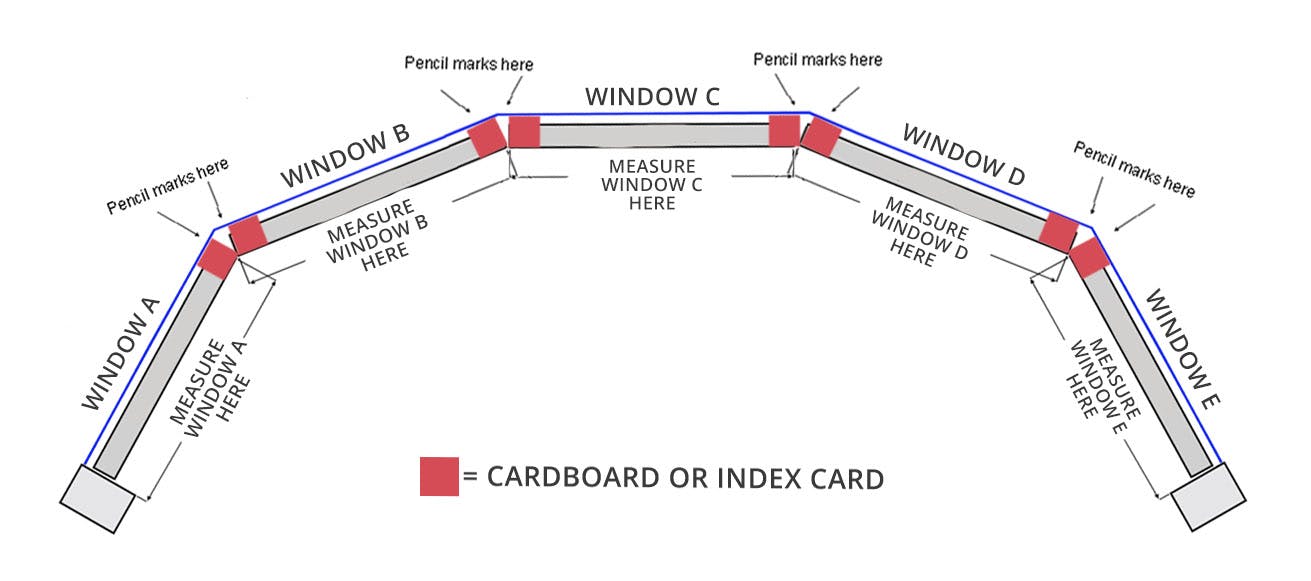
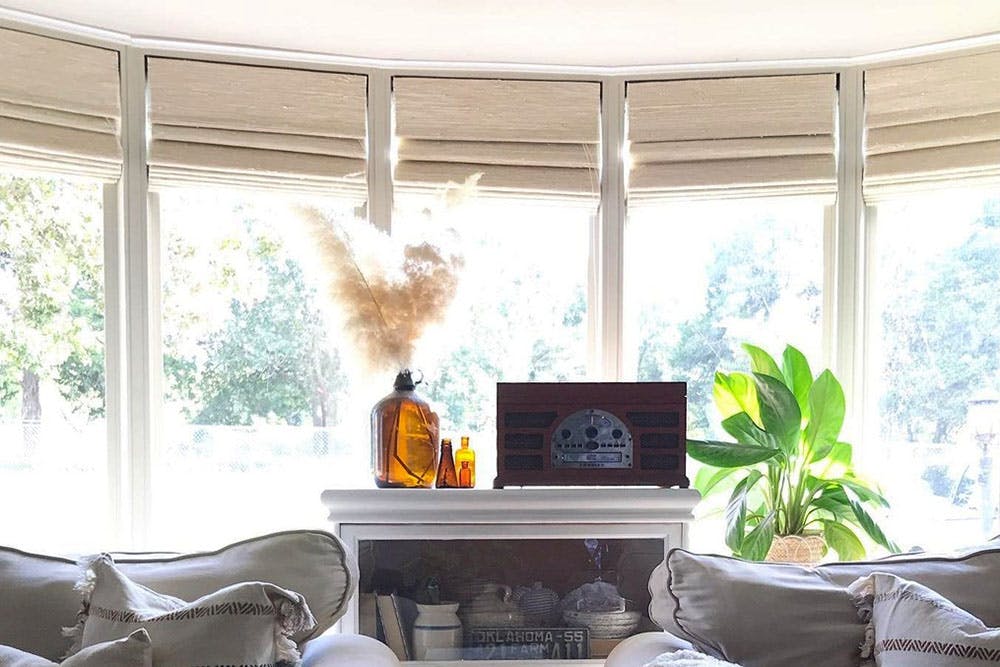
Pictured: Blinds.com Woven Wood Shades in Natural Weave Bleached. Photo via @lillianandkatellc.
Need More Help?
Don’t hesitate to call in and speak with one of our expert Design Consultants if you have questions: 844-551-3769. Would you prefer a professional to come out and measure your windows? We can do that too! Check your zip code's availability here.

